West Coast Wildlife Adventures approached to view the elephant seal within 10 meters of the seal. I advised him he was too close since slash was there basking in the water. He had moved in to get a close look from a few metres. Images placed on ecotourism page on web. This is not the first whale watching boat that is coming in too close this season. With seal pups in the water this is a dangerous thing to do. See the ecotourism page for more information.’, ‘Garry’, ’12:41:23′),
Category Archives: Admin
Limited Habitat of Purple star at Low tide
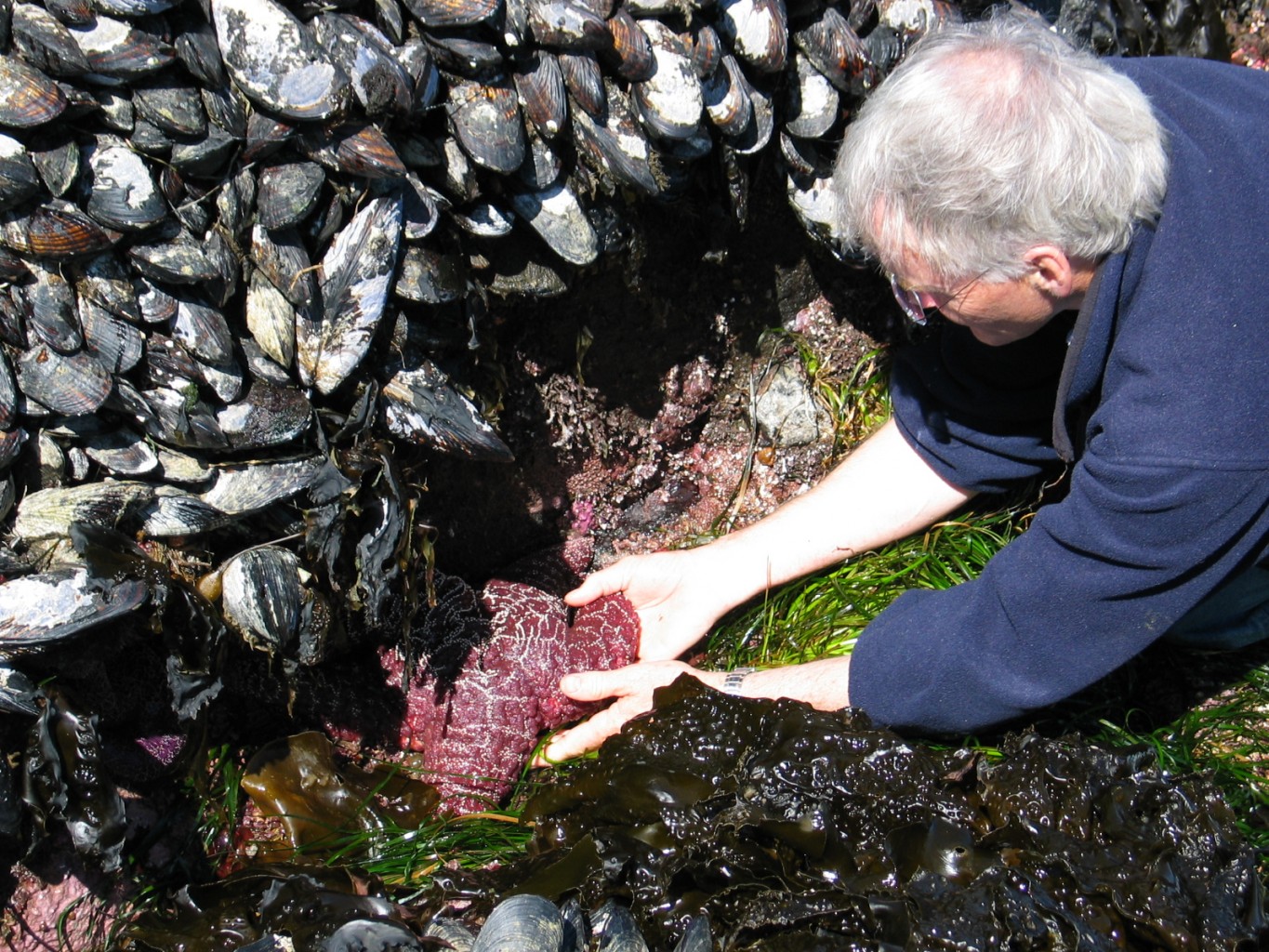 West Coast Wildlife Adventures approached to view the elephant seal also within 10 meters of the seal. I advised him he was too close since slash was there basking in the water. He had moved in to get a close look from a few metres. Images were placed on ecotourism page on web.
West Coast Wildlife Adventures approached to view the elephant seal also within 10 meters of the seal. I advised him he was too close since slash was there basking in the water. He had moved in to get a close look from a few metres. Images were placed on ecotourism page on web.
I found another black oystercatcher nest down in front of the Winch House, so moved camera3 over to it. (Update note on July 17–2 young were observed near the nest). In the morning I went out on the intertidal for the minus tide. Excellent long exposure of the surge channel and the cave on the South west side. Also got onto Anita’s intertidal island down from the helipad. I was looking for the large ( 45 cm diameter Purple star. Which I saw there two years ago, and at that time I thought he was the only one on the island. This time I found another smaller one– 30 cm diameter in a similar protected channel only 2 metres from the other one. Since these sea stars inhabit the lower intertidal zone, they cannot withstand the heavy wave action that occurs in that area without these deep channels which are protected by a rise on the seaward side to the west. As far as I know these are the only two purple stars occurring at Race Rocks. They are very common however in other sheltered inland coastlines in BC and are frequently the first sea star that visitors to BC shores notice. I also made note of a large number of very colourful brooding anemone exposed on the same protected mussel-covered wall on that island. There was an unusual abundance of blue ones which I remember to be rather rare when seen by diving in that area previously . One gull nest close to the science centre has chicks hatching.
Race Rocks – the Ecology of Eden
Originally Published by archipelagomedia.com…..now not available.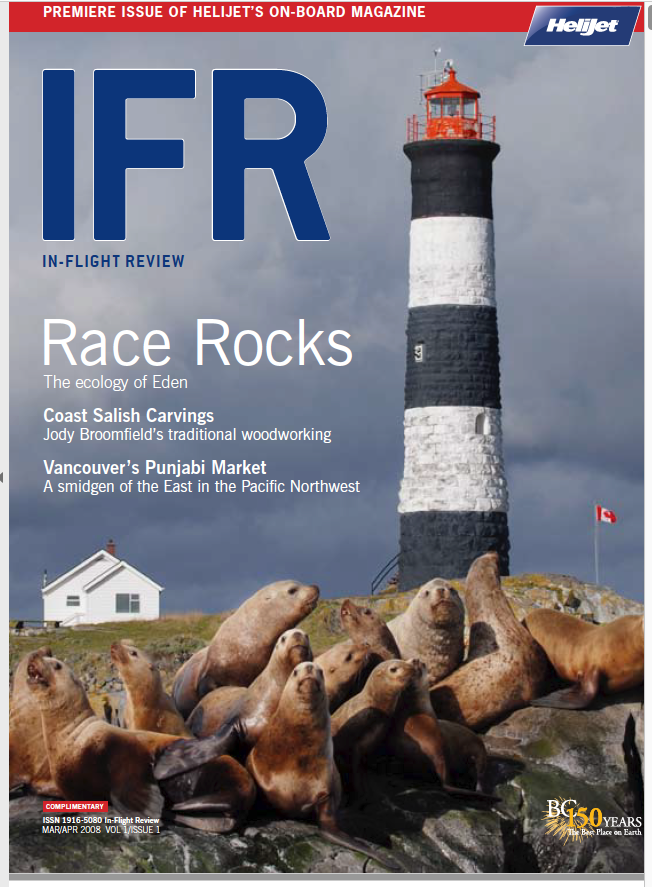
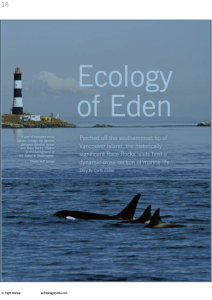
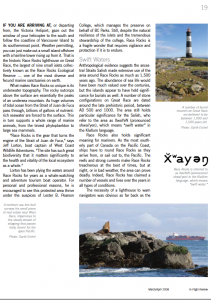
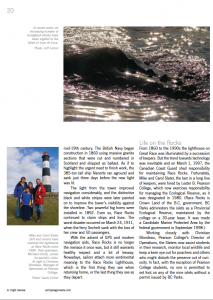
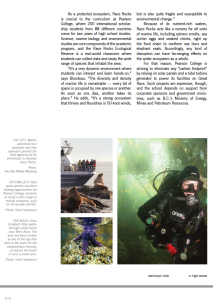
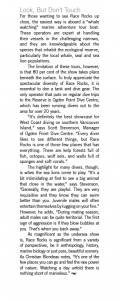
STRATEGIES FOR A SUSTAINABLE MARINE FUTURE
The key message of this resource is on global marine issues, and the integral role of all humans in maintaining environmentally sustainable marine ecosystems. Examples from the British Columbia marine environment are used to illustrate the principles which can also apply on a global scale. The over-arching concept of this resource is what marine environmental sustainability means locally and how people can be encouraged to commit to contribute to the process. We believe that people of all ages can use the tools to actively participate in making our marine environment sustainable.
 We thank the Shaw Ocean Discovery Centre, formerly the New Marine Centre in Sidney on Vancouver Island in British Columbia for supporting the development of the document that provides the basis for this curriculum resource. I encourage you to visit this centre opened in the spring of 2009.
We thank the Shaw Ocean Discovery Centre, formerly the New Marine Centre in Sidney on Vancouver Island in British Columbia for supporting the development of the document that provides the basis for this curriculum resource. I encourage you to visit this centre opened in the spring of 2009.
Garry Fletcher
Marine Education Consulting
Victoria, BC.
Race Rocks Lighthouse Great Race Island, British Columbia DFRP # 17447 Condition Assessment Including Indicative Cost Estimate: 2007
This document was prepared two years before DFO actually did the upgrading of the light tower. The following quotes on the historic significance is worth noting.
The Race Rocks tower is located on Great Race Island, a small and barren rock outcrop in the Strait of Juan de Fuca, about fifteen kilometres south of Victoria, British Columbia. Erected in 1860, simultaneously as Fisgard light, with which it was designed to function, the Race Rocks light tower is British Columbia’s second oldest operating lighthouse and a forerunner of the extensive system of navigational aids built during the following century along Canada’s West Coast.
Construction of both the Fisgard and Race Rocks towers was undertaken in 1859, at the initiative of colonial officials and with partial financial and technical support of the Imperial Government. The latter provided its expertise, the lighting apparatus, which according to the local legend, would have travelled from England with Fisgard’s first light keeper, and 7000 pounds in funding, half as a grant, half as a loan. The colonial government oversaw the selection of the site and the construction following a plan of combined tower and dwelling, attributed to both JohnWright of London and to the Surveyor General of British Columbia, Joseph Pemberton.1
“Race Rocks light tower is “the only known example of tall, pre-Confederation, unsheathed stone masonry tower, built outside of Ontario”.2 Along with towers of a similar design on the Great Lakes, it shares the classification of “Imperial” tower, a reference to its typology as a tall, tapered, circular, pitched-faced stone structure, rather than to the British involvement in its construction. Unlike the Imperial towers of Ontario, however, the interior configuration of the Race Rocks lighthouse was based on its being attached to the keeper’s residence, and consists of a continuous stone spiral staircase rather than of superposed wooden floors linked by ladders.
The light at Race Rocks was lit on December 26, 1860, a month after that of the Fisgard tower. Until the construction of the landfall light at Carmanah Point in 1891, it was considered the most important lighthouse in British Columbia. It was attended to by a long succession of light keepers and their families, who lived in the attached stone residence until the construction of new dwellings in 1964, closely followed by the demolition of the original house in 1967.”
EXECUTIVE SUMMARY Background
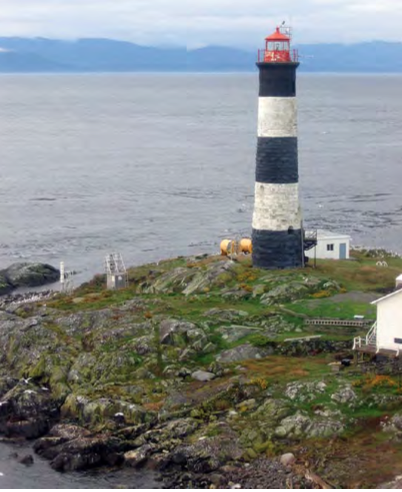 The Heritage Conservation Network (HCN) project team has completed the condition assessment and report for the Race Rocks Lighthouse located on Great Race Island in the Juan de Fuca Strait, south of Victoria, British Columbia, as part of the project for eighteen lighthouses for the Department of Fisheries and Oceans (DFO). The report contains structural and building envelope conditions, analysis of these conditions, recommendations and indicative cost estimates for mandatory and cyclical conservation work both in the short and the long term.
The Heritage Conservation Network (HCN) project team has completed the condition assessment and report for the Race Rocks Lighthouse located on Great Race Island in the Juan de Fuca Strait, south of Victoria, British Columbia, as part of the project for eighteen lighthouses for the Department of Fisheries and Oceans (DFO). The report contains structural and building envelope conditions, analysis of these conditions, recommendations and indicative cost estimates for mandatory and cyclical conservation work both in the short and the long term.
See the Full PDF at :Condition Assessment
Conservation Approach
This condition assessment, report and related recommendations, follow the conservation approach of minimal intervention and least harm to preserve/protect heritage character. This approach will help provide DFO with information required to properly manage the Race Rocks lighthouse while ensuring that the building is safe in terms of both public and staff and that the existing heritage fabric will be protected and maintained.
Description
The Race Rocks Lighthouse is a pitched-face stone structure with a round, tapered shaft, painted with a series of horizontal black and white painted stripes. The tower corbels at the top forming a gallery around the cast iron lantern, which rises approximately 32 meters (105′-0″) tall from grade, and tapers from a diameter of approximately 5.8 meters at its base to 3.8 meters at its narrowest point below the gallery. The tower is accessible through a curved metalic stair and arched door opening, located 3.20 meters (10’6″) above grade. It is pierced with 4 window openings, the two lowest of which are arched and the top two, rectangular. The cast iron octagonal lantern, which sits atop the concrete parapet, can be reached by a continuous stone spiral staircase, which terminates just below it.
Heritage Value
The Race Rocks Lighthouse is a Recognized federal heritage building (FHBRO log number 90-85). It obtained a total score of 62, based on a score of 14 for historical associations, 23 for architecture, and 25 for environment. A review of the related Heritage Character Statement is provided in the report to help the lighthouse custodians identify and protect heritage fabric and aid in guiding future maintenance and repair interventions so as to maintain the lighthouse’s heritage value. This section identifies all of the elements of the lighthouse that are important in defining the overall heritage values that require protection. Its character-defining elements reside in its robust stonework construction consisting of large rusticated blocks with limited decorative detailing, typical of “Imperial” lighthouse design, in its black and white day marking and in the interior spiral stone stairway. Other buildings on the islands are considered to contribute to the heritage character of the tower’s environment, but were not investigated for this report.
PWGSC, P&TSM, Heritage Conservation Network 1
Race Rocks Lighthouse Condition Assessment Reports Victoria, British Columbia Including Indicative Cost Estimate
Methodology
Background and historical documentation were consulted both before and after the on-site investigation. This included a review of documents related to environmental site assessments in the preparation of the Site Specific Safety Plan prior to the site visit. The on-site investigation consisted of a preliminary site orientation by the team members to gain a general understanding of the building and its surroundings. Detailed visual and tactile investigations were then carried out on both the exterior and interior of the lighthouse. All investigations were non-destructive by nature and any samples were gathered from loose or fallen materials.
Assessment
Building Structure:
Overall, the stone walls from the foundations to the top of the tower were found to be in fair to poor condition. Although there are no signs of displacements or structural instability, extensive damage was observed. Two large vertical cracks extend vertically from the base of the tower to a height of approximately 10 meters and will require mapping and monitoring. Deterioration of the stone also included delamination and salt formation, mostly visible on the interior walls, at the top of the tower, corresponding to exterior areas that were covered in “gunite” several decades ago. Water appears to be trapped in the walls at that level and the stone masonry will require rapid treatment in the affected area to limit further decay. Extensive cleaning, repointing and renewal of the impervious coating will also be required throughout.
Lantern and Gallery:
Deferred maintenance of the lantern and gallery has lead to deterioration of surfaces, with paint chipping and corrosion of the cast iron lantern and paint failure and concrete spalling of the underlying parapet. The gallery also shows traces of surface deterioration, with decayed paint and a failing membrane.
Building Envelope:
With the exception of an opening obstructed with fog-detection equipment, windows and the access door were found to be in good condition overall. The main recommendation with regards to the building envelope concerns the improvement of ventilation and heating levels to help resolve the stone deterioration on the interior face of the walls. Ventilation may for instance be provided through the windows and door openings.
Other Building Elements:
The exterior stair is a recent addition to the structure and is in good condition overall. It may warrant replacement in the future for reasons of code compliance and enhancement of the structure’s heritage character.
2 PWGSC, P&TSM, Heritage Conservation Network
Race Rocks Lighthouse Condition Assessment Reports Victoria, British Columbia Including Indicative Cost Estimate
Recommendations
The principal recommendations for this condition assessment would include:
- Examine and monitor the two vertical cracks at the base of the tower for a minimum of 1-2 years to verify if they are still active and identify their cause(s).
- Remove the “gunite” coating from the top of the exterior walls using an appropriate method.
- Clean, repair and repoint the stone on both interior and exterior faces of the tower.
- Remove all paint on the interior of the tower, using an appropriate non-abrasive method.
- Replace the existing impervious coating with a coating that allows circulation of water vapour and repaint the existing daymarking.
- Remove and repair the cast iron lantern (workshop conservation).
- Repair of the top of the parapet, at the base of the lantern.
- Provision of additional ventilation and heating inside the tower.
- Implement regular maintenance activities. A detailed list of recommendations, identifying the recommended short- or long-term time frame is provided by building element in Section 4.0 and by type (mandatory, cyclical, investigation). Further investigation into building elements that were not accessible, research, and monitoring of conditions will also be an important future activity.
Cost Estimates
The estimated cost for all recommended mandatory and cyclical work for the next twenty-five (25) years is $3,503,600. The corresponding Net Present Value (NPV) is $1,782,000.
This amount corresponds to the sum (in NPV) of the mandatory generally short-term work $598,000, the cyclical generally long-term work $653,000 while also providing an allowance of $76,000 for further essential investigation, monitoring, and research, and $455,000 for overall fees, administration, etc.
The cost estimates for a Five Year Operating and Maintenance Plan, as provided by DFO, are included in Appendix J.
Race Rocks Lighthouse Victoria, British Columbia
Condition Assessment Reports Including Indicative Cost Estimate
TABLE OF CONTENTS
EXECUTIVE SUMMARY ……………………………………………………………………………………………..1
1.0 INTRODUCTION………………………………………………………………………………………………..5
- 1.1 Background……………………………………………………………………………………………….5
- 1.2 Historic Context …………………………………………………………………………………………5
- 1.3 Conservation Approach ………………………………………………………………………………9
- 1.4 Project Team ……………………………………………………………………………………………11
2.0 LIGHTHOUSE DESCRIPTION…………………………………………………………………………12
- 2.1 Construction of the Lighthouse……………………………………………………………………12
- 2.2 Evolution of the Lighthouse ……………………………………………………………………….13
3.0 HERITAGE VALUE ………………………………………………………………………………………….17
4.0 CONDITION OBSERVATIONS, ASSESSMENT AND RECOMMENDATIONS …18
- 4.1 Methodology …………………………………………………………………………………………….18
- 4.2 Building Structure ……………………………………………………………………………………..19
- 4.2.1 Foundation …………………………………………………………………………………….19
- 4.2.2 Wall Structure ………………………………………………………………………………..24
- 4.2.3 Floor Structure and Interior Stair ………………………………………………………34
- 4.3 Lantern and Gallery ………………………………………………………………………………….38
- 4.4 Building Envelope …………………………………………………………………………………….46
- 4.4.1 Exterior Walls and Roof ………………………………………………………………….46
- 4.4.2 Windows……………………………………………………………………………………….49
- 4.4.3 Doors…………………………………………………………………………………………….52
- 4.5 Other Building Elements ……………………………………………………………………………54
5.0 ISSUES ANALYSIS …………………………………………………………………………………………..56
- 5.1 Health and Safety ………………………………………………………………………………………56
- 5.2 Protection of Heritage Character …………………………………………………………………56
- 5.3 Site-Specific Challenges to Future Planning Work ………………………………………..56
- 5.4 Materials Conservation Specialists Required ………………………………………………..57
- 5.5 Need for a Regular Maintenance Program ……………………………………………………58
6.0 URGENT WORK TO PROTECT THE PUBLIC AND STAFF …………………………..59
PWGSC, P&TSM, Heritage Conservation Network i
Race Rocks Lighthouse Condition Assessment Reports Victoria, British Columbia Including Indicative Cost Estimate
7.0 LONG-TERM CONSERVATION PROJECT PLAN AND
OPERATING AND MAINTENANCE PLAN ……………………………………………………..60
- 7.1 Urgent Work to Protect Heritage Character ………………………………………………….60
- 7.2 Recommendations for Further Investigation, Including Testing and Recording…60
- 7.3 Twenty-five Year Mandatory and Cyclical Long-term Repairs/Replacements ….61
- 7.4 Five Y ear Operating and Maintenance Plan ………………………………………………….63
- 7.5 Schedule…………………………………………………………………………………………………..63
8.0 COST ESTIMATES …………………………………………………………………………………………..64
- 8.1 Twenty-five Year Project Plan ……………………………………………………………………65
- 8.2 Five Year Operating & Maintenance Plan…………………………………………………….66
- 8.3 Demolition Option and Due Diligence …………………………………………………………66
APPENDIX A: APPENDIX B: APPENDIX C: APPENDIX D: APPENDIX E: APPENDIX F: APPENDIX G: APPENDIX H: APPENDIX I: APPENDIX J:
Reference Documents ……………………………………………………………………….. A-1
FHBRO Heritage Character Statement, Score and Building Report ……B-1
The Stone Tower………………………………………………………………………………..C-1
Supplementary Chronology of Historical Information ………………………. D-1
Archival Drawings……………………………………………………………………………..E-1
Executive Summaries of Environmental Assessment Reports……………… F-1
Site Specific Safety Plan ……………………………………………………………………. G-1
Field Observations……………………………………………………………………………. H-1
Detailed Cost Table for all Recommendations ……………………………………..I-1
Five Year Operating and Maintenance Plan ………………………………………..J-1
See the Full PDF at :Condition Assessment
A beacon of hope for Race Rocks ( Times Colonist, 2007)
A beacon of hope for Race Rocks — Times Colonist (Victoria) February 6, 2007
When Garry Fletcher pulls his hand away from the wet wall of the Race Rocks light station, chunks of stone come off in his palm and fall to the steps of the curving stairwell.
The 147-year-old tower’s base, built out of Scottish granite, isn’t so bad, but up at the top, salt and water have worked through the sandstone. Outside, on the parapet encircling the light, old orange paint peels off in sheets. Continue reading
Creating power to stay in power:
Creating power to stay in power:
Conservatives are out to prove that their plan is better than the Liberal oneTimes Colonist (Victoria) Saturday, January 20, 2007Page: A16 Section: Comment Byline: Les Leyne Column: Les Leyne Source: CanWest News Service
What a lot of trouble Prime Minister Stephen Harper went to in order to announce that a rather obscure alternative energy program that the Liberals unveiled earlier is going to carry on under his government. By plane, by motorcade and by water taxi he made his way almost literally to the ends of the Earth to illuminate the point that “Canada’s new government,” as Tories like to say, is following Canada’s old government when it comes to nurturing alternative energy suppliers.
Lester B. Pearson College isn’t the end of the earth, but it’s on the edge of the western frontier as far as most Canadians are concerned. It was a good backdrop for an alternative energy announcement (even if it is named for a Liberal PM) because it’s home base for the ecological reserve at Race Rocks, on which sits a tiny tidal-power demo project.
Harper has a newfound passion for eco-friendly initiatives that can be said to curb greenhouse-gas emissions that contribute to climate change. It’s burning so intently that he even ventured past the college, hopping a boat for a quick run out to Race Rocks for a photo opportunity.The project is the only one of its kind in Canada. Getting electricity out of this sort of natural power — tidal, solar, geothermal, wind — is about the coolest thing you can imagine. But the technology needs a lot of work before it can go big league, so alternative energy needs to be coddled for years to come. Harper put down $1.5 billion over 10 years.
Federal Liberals fronted a similar program during their last term. Its future was uncertain when the Conservatives took over. But the conventional wisdom is that something clicked in the public’s mind recently.
Perhaps it was prompted by the extreme weather — savage storms in the west, freakishly warm days in the east. Climate change became a big deal and the Conservative government became determined, even desperate, to stay on top of it.
So Harper canned Rona Ambrose, his environment minister, replaced her with someone more familiar with the game of political hardball– John Baird — and set his government on an eco-blitz, which touched down at Pearson College.
Amazing what can come from Ontarians playing golf in December.
The blitz is an impressive one. The prime minister brought two supporting acts with him — Baird and Natural Resources Minister Gary Lunn. The federal incursion demanded a provincial response, so B.C. Energy Minister Richard Neufeld made an appearance. And a host of people from the alternative energy world — third-party validators — were invited to bulk up the audience.
The message is double-edged. Conservatives want it known that not only are they concerned about climate change and doing something about it, they’re doing more than the Liberals ever did.
So Harper and Baird outlined their alternative energy funding and quickly compared it to the Liberal record. As Baird put it, meeting the targets set by the Kyoto accord was the start of a marathon, but the Liberals spent the first 10 years after signing it running in the wrong direction.
And Harper said the initiatives were funded in the last budget.
“It may seem like a year is a long time to get them in place, but what we faced when we took office was a whole series of environmental programs that either weren’t reducing emissions in most cases or hadn’t even got off the ground…”
That in a nutshell is what the next few months of environmental debate are going to sound like in Ottawa. Some voters will welcome the new thrust, regardless of its timing. Some will decide Harper’s commitment to cleaner air is too late to be trustworthy. And everyone will have to measure it against the Liberal alternative, which was skimpy, at least prior to the leadership change.
The money promised yesterday for clean power is supposed to createthe same effect as getting a million cars off the road. But if they wanted to tackle climate change head-on, why didn’t they just get a million cars off the road?
It would hurt too much. Harper said people have to have the ability to earn an income. ” What we’re trying to do with our environmental plan is allow people to be prosperous and have energy security as well.”
Harper pointed out the emissions debate often centres on the sectors of the economy that produce them. But everyone uses transportation, energy and industrial products. “If we’re going to make the transformations in our economy we want to make over time, there’s going to be a responsibility of everyone to participate in that.”
The winner of this argument will be the one with the best argument about why their plan to curb emissions won’t hurt as much as the other guy’s plan.
Reprinted with the permission of Les Leyne
lleyne@tc.canwest.com
Tidal Energy ENCANA video
This video is a compressed version of the one produced by Brainstorm for the Tidal Current Power Project. It documents the partners and the process along the way in the establishment of the Turbine Project . (released January 19, 2007 to correspond with the visit of Prime Minister Stephen Harper to Lester Pearson College and Race Rocks. )
The Tidal Current Energy Project at Race Rocks
This video is a compressed version of the one produced by Brainstorm for the Tidal Current Power Project. It documents the partners and the process along the way in the establishment of the Turbine Project . (released January 19, 2007 to correspond with the visit of Prime Minister Stephen Harper to Lester Pearson College and Race Rocks.)
Stephen Harper visits Race Rocks
On January 19 2007,Prime Minister Stephen Harper and two federal cabinet ministers, Gary Lunn and John Baird pose with Glenn Darou beside a scale model of the energy generating turbine installed at Race Rocks in September of 2006.
See the full story and photos:
http://www.racerocks.com/racerock/energy/tidalenergy/tidalenergyannounce.htm
